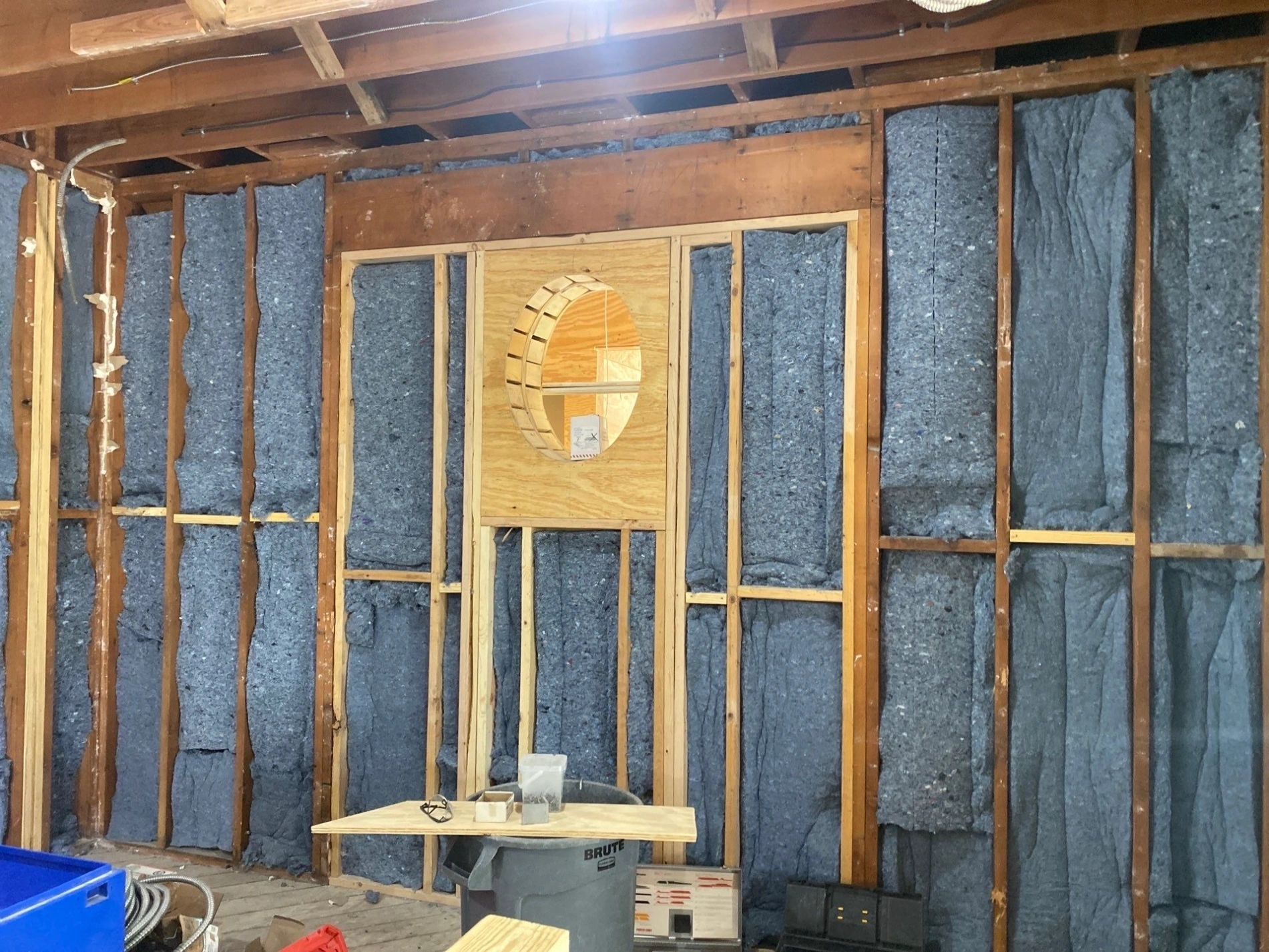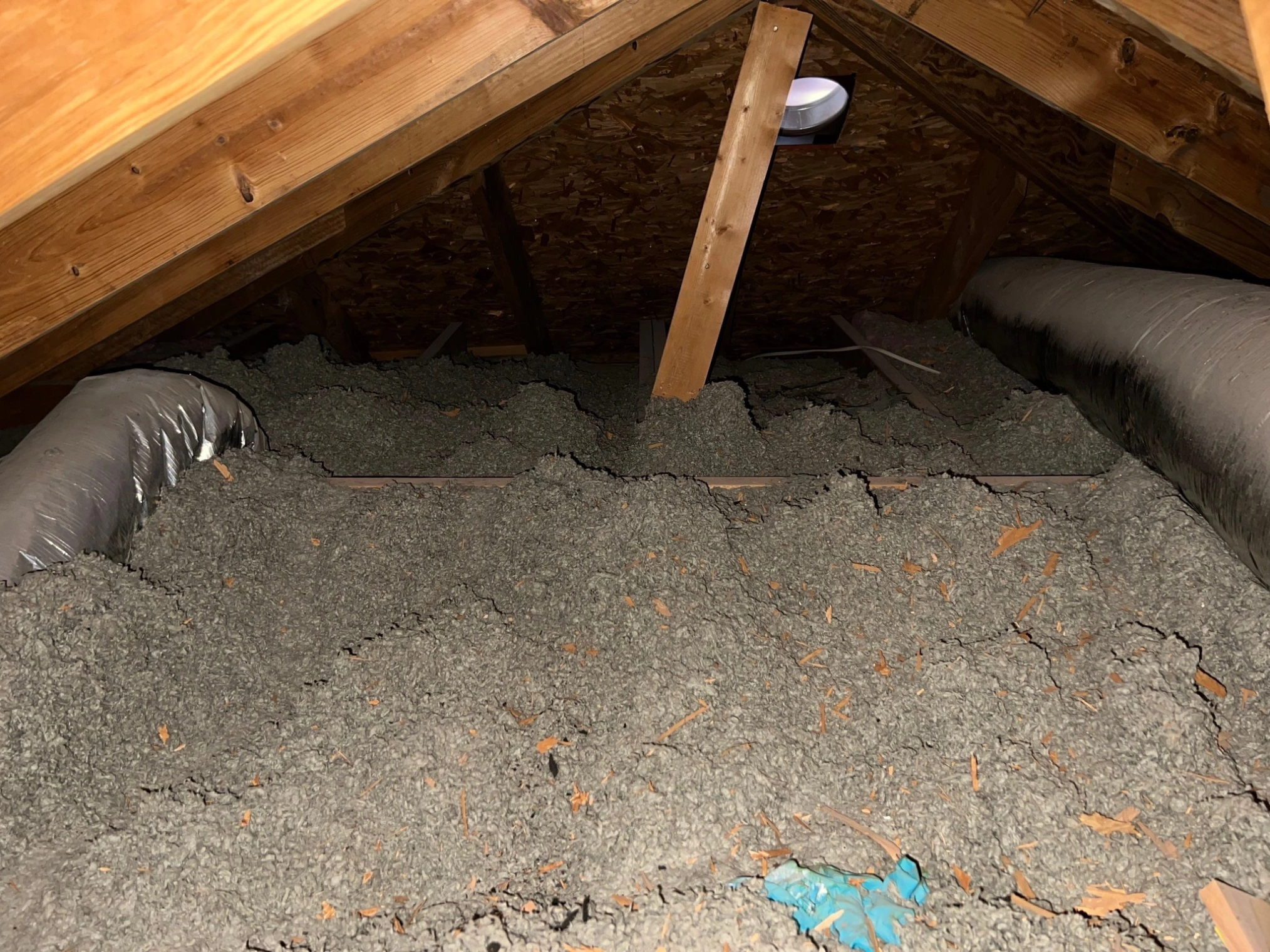Cellulose insulation outperforms fiberglass in thermal performance, air sealing capabilities, and moisture resistance, delivering R-values 20-30% higher per inch of thickness. While fiberglass costs less upfront, cellulose provides superior long-term energy savings through better density and reduced air infiltration.
The performance gap becomes more pronounced in real-world conditions where temperature fluctuations and air movement occur. Based on extensive installation experience across various climate zones, cellulose maintains its thermal properties more effectively than fiberglass when subjected to settling, moisture exposure, and temperature cycling. This analysis examines critical performance factors, installation considerations, and cost implications to help property owners make informed insulation decisions.
Performance Comparison Overview
The fundamental differences between cellulose and fiberglass stem from their material composition and manufacturing processes. Cellulose consists of recycled paper fibers treated with fire retardants, creating a dense, interlocking matrix. Fiberglass uses spun glass fibers bound together, forming a lighter, more porous structure.
| Performance Factor | Cellulose | Fiberglass |
|---|---|---|
| R-Value per inch | 3.6-3.8 | 2.2-2.7 |
| Density (lbs/cubic ft) | 2.0-3.5 | 0.5-1.0 |
| Air infiltration reduction | 35-40% | 5-15% |
| Moisture absorption | Moderate (releases when dry) | Low (retains moisture) |
| Fire resistance | Class A rating | Class A rating |
| Pest deterrent | Yes (boric acid treatment) | No |
| Installation method | Blown-in dense pack | Batt or blown |
| Settling factor | 15-20% over 20 years | 5-10% over 20 years |
Thermal Performance Analysis
Cellulose demonstrates superior thermal resistance through multiple mechanisms beyond basic R-value measurements. The material’s density creates thermal mass that stabilizes temperature fluctuations, while its fibrous structure forms numerous air pockets that trap heat effectively.
Laboratory testing by the Oak Ridge National Laboratory shows cellulose maintains 98% of its R-value at temperature differentials up to 40°F, compared to fiberglass which loses 8-12% efficiency under similar conditions. This performance advantage becomes critical in extreme climate zones where temperature swings exceed standard testing parameters.
Bonus Tip: Dense-pack cellulose installation at 3.5 pounds per cubic foot eliminates convective air currents that reduce insulation effectiveness by up to 50% in loose-fill applications.
The air sealing properties of cellulose provide additional thermal benefits rarely captured in standard R-value testing. When properly installed, cellulose reduces air infiltration by creating a continuous thermal barrier that conforms to irregular spaces and building components.
Climate-Specific Performance Considerations
Regional climate conditions significantly impact insulation performance characteristics. In humid southeastern climates, cellulose’s ability to absorb and release moisture prevents condensation buildup that compromises fiberglass effectiveness. The treated paper fibers regulate humidity levels while maintaining thermal properties.
Cold northern climates benefit from cellulose’s superior air sealing capabilities, which prevent warm air infiltration that creates ice dams and reduces heating efficiency. Field studies in Minnesota demonstrate 25% greater energy savings with cellulose compared to fiberglass in homes with equivalent R-values.
Desert climates present unique challenges where temperature differentials exceed 60°F between day and night. Cellulose’s thermal mass properties moderate these extremes, reducing HVAC cycling and improving comfort levels compared to lightweight fiberglass alternatives.
Installation and Long-Term Performance
Installation quality determines actual performance regardless of material selection. Cellulose requires specialized equipment and experienced technicians to achieve proper density and coverage. Inadequate installation results in settling, reduced R-values, and compromised air sealing benefits.
Fiberglass batt installation appears simpler but demands careful attention to eliminate gaps, compression, and thermal bridging. Poor installation practices reduce effectiveness by 15-50%, negating cost advantages and creating performance issues that persist throughout the building’s lifespan.
| Installation Factor | Cellulose | Fiberglass |
|---|---|---|
| Equipment required | Specialized blowing machine | Basic tools or blowing machine |
| Installation time | 6-8 hours (2000 sq ft) | 4-6 hours (2000 sq ft) |
| Skill level required | Professional recommended | DIY possible |
| Quality control difficulty | Moderate (density verification) | High (gap elimination) |
| Retrofit compatibility | Excellent | Limited |
Bonus Tip: Cellulose installation in existing walls requires careful moisture evaluation and vapor barrier assessment to prevent condensation issues in mixed climates.
Cost Analysis and Return on Investment
Initial material costs favor fiberglass by 15-25%, but total project costs depend on installation complexity and labor requirements. Cellulose installations typically cost $2.50-$4.00 per square foot compared to $1.75-$3.25 for fiberglass, including professional installation.
Energy savings calculations must consider actual performance under local conditions rather than laboratory R-values. Utility bill analysis from comparable homes shows cellulose installations reduce heating and cooling costs by 18-28% compared to fiberglass alternatives with equivalent R-ratings.
According to Energy Star data from 2024, cellulose insulation pays for itself within 3-5 years in most climate zones, compared to 5-8 years for fiberglass upgrades. The performance gap widens over time as cellulose maintains effectiveness while fiberglass degrades from settling and moisture exposure.
Things to Consider Before Making a Decision
- Building Age and Construction Type: Older homes with irregular framing benefit more from cellulose’s conforming properties, while new construction with standard framing accommodates fiberglass batts effectively.
- Local Climate Conditions: Humid climates require moisture management capabilities that favor cellulose, while dry climates with minimal temperature swings may not justify the additional cost.
- Budget and Timeline: Fiberglass offers lower upfront costs and faster installation, important factors for budget-constrained projects or quick renovations.
- Long-term Occupancy Plans: Property owners planning to remain in homes for 10+ years realize greater benefits from cellulose’s superior performance, while shorter-term residents may prioritize lower initial costs.
- Existing Ventilation Systems: Homes with inadequate ventilation benefit from cellulose’s moisture buffering properties, while well-ventilated structures can accommodate fiberglass without moisture concerns.
- Fire Safety Requirements: Both materials meet building codes, but cellulose’s fire retardant treatment provides additional protection in high-risk areas.

Professional Insulation Services Available
Comprehensive Insulation Solutions Stellrr Insulation & Spray Foam Provides
- Cellulose Insulation: Expert installation using calibrated equipment ensures proper density and coverage for maximum thermal performance. Professional assessment determines optimal installation methods for existing and new construction applications.
- Wall Insulation: Specialized techniques for retrofit installations minimize disruption while achieving complete coverage in existing wall cavities. Advanced methods eliminate thermal bridging and air infiltration issues.
- Attic Insulation: Complete attic systems including air sealing, vapor barriers, and ventilation optimization maximize energy efficiency and prevent moisture problems. Professional evaluation identifies specific requirements for different attic configurations.
- Insulation Removal: Safe removal of existing materials prepares spaces for upgraded insulation systems. Proper disposal and contamination prevention protect indoor air quality during renovation projects.
Common Questions About Insulation Selection
Which insulation reduces energy bills more effectively?
Cellulose typically reduces energy costs by 20-30% more than fiberglass due to superior air sealing and thermal performance. The exact savings depend on climate conditions, installation quality, and existing insulation levels.
How long does each type of insulation last?
Both materials last 20-30 years when properly installed, but cellulose maintains performance characteristics more consistently over time. Fiberglass may require earlier replacement in high-moisture environments or areas with significant settling.
Can cellulose insulation cause health problems?
Modern cellulose uses safe fire retardants and creates minimal airborne particles when properly installed. Both cellulose and fiberglass require professional installation to minimize dust exposure during application.
Which insulation works better for soundproofing?
Cellulose provides superior sound absorption due to its density and fiber structure, reducing noise transmission by 5-8 decibels compared to fiberglass installations of equivalent thickness.
Does climate affect insulation choice?
Climate significantly impacts performance, with cellulose performing better in humid conditions and extreme temperature variations. Fiberglass works adequately in mild, dry climates with minimal temperature fluctuations.
Making the Right Choice for Your Property
Cellulose insulation delivers measurably better performance through superior R-values, air sealing capabilities, and moisture management properties. The material excels in retrofit applications, challenging installations, and climates with significant temperature or humidity variations.
Fiberglass remains viable for new construction projects with standard framing, budget constraints, or mild climate conditions where performance differences have minimal impact. The key lies in matching insulation characteristics to specific building requirements and performance expectations.
Successful spray foam insulation projects depend more on proper installation techniques and system design than material selection alone. Professional evaluation identifies the most appropriate solutions based on building characteristics, climate conditions, and performance goals rather than simple cost comparisons.
Get Expert Insulation Guidance
Professional insulation assessment ensures optimal material selection and installation techniques for maximum energy savings and comfort. Experienced technicians evaluate specific building requirements, climate considerations, and performance goals to recommend the most effective solutions.
Contact Stellrr Insulation & Spray Foam for comprehensive insulation evaluation and professional installation services. Our experienced team provides detailed analysis of your property’s insulation needs and delivers superior results through proven techniques and quality materials.
Phone: (512) 710-2839
Email: info@stellrr.com
Schedule your consultation to discover how proper insulation selection and installation can reduce energy costs while improving comfort and indoor air quality.
Frequently Asked Questions
How do I know if my current insulation needs replacement?
Insulation older than 15 years, visible settling or compression, moisture damage, pest infestation, or increasing energy bills indicate replacement needs. Professional assessment identifies specific deficiencies and upgrade opportunities.
What maintenance does each insulation type require?
Neither cellulose nor fiberglass requires routine maintenance once installed, but periodic inspection for settling, moisture damage, or pest activity helps maintain performance. Attic insulation may need redistribution after 10-15 years.
Can I install insulation over existing material?
Adding insulation over existing material works in many situations, but proper evaluation prevents moisture problems and ensures compatibility. Different insulation types require specific installation techniques when combined.
How does insulation affect home resale value?
Energy-efficient insulation increases property values by 2-6% and improves marketability, with cellulose installations commanding slight premiums due to superior performance ratings and energy certifications.
What warranty coverage applies to insulation installations?
Professional installations typically include 1-3 year workmanship warranties, while material warranties vary by manufacturer. Cellulose manufacturers often provide 20-year performance guarantees when installed to specifications.

